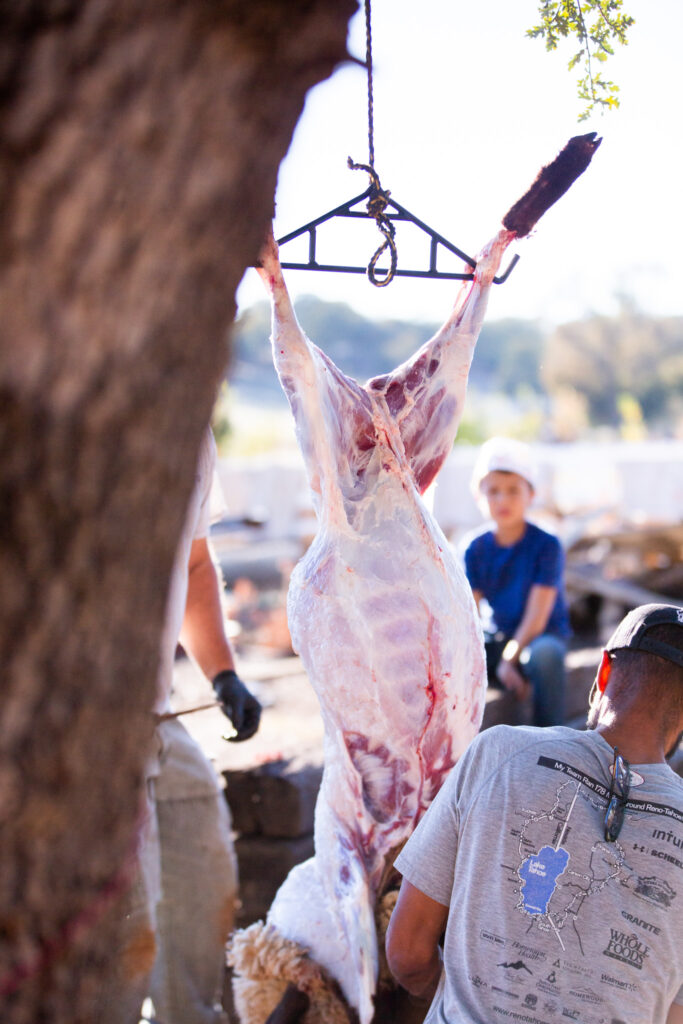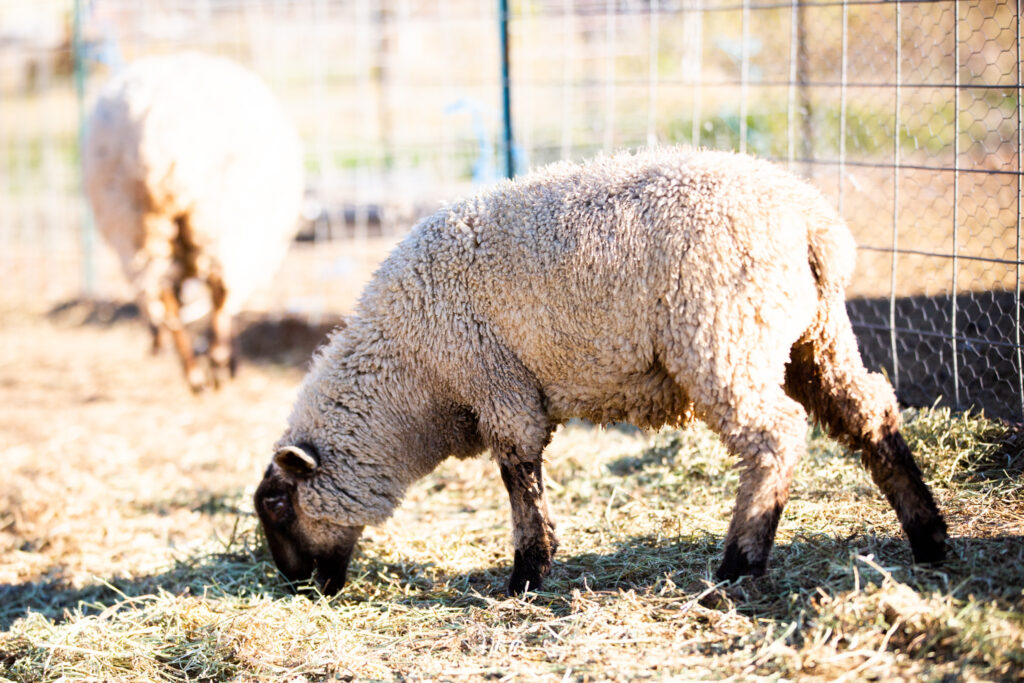Selecting the best sheep for meat production involves evaluating various breeds known for their quality meat and growth efficiency.

Meat sheep breeds are specifically cultivated to possess traits that are advantageous for meat production, such as rapid growth rates, efficient feed conversion, and superior carcass qualities.
Breeds such as the Suffolk, Texel, and Hampshire have gained prominence in the industry due to their muscular build and high meat yield, offering farmers robust options for their livestock operations.

When considering sheep for meat, one must assess factors like breed characteristics, climate adaptability, and management requirements.
The Suffolk breed, for example, is renowned for its fast growth and lean meat, making it a popular choice globally.
Similarly, the Texel sheep, originating from the Netherlands, is known for its exceptional carcass quality and is regarded as a leading meat breed in Europe.
These characteristics are vital for producers looking to optimize their meat production and satisfy the market’s demand for premium quality lamb and mutton.
Understanding Sheep Breeds for Meat Production

When considering sheep breeds for meat production, it is important to understand their specific characteristics, popular breeds, regional preferences, and how they align with farm needs, including sexual maturity and fertility rates.
Characteristics of Meat Sheep Breeds
Meat sheep breeds are selected for traits that directly influence meat quality and farm profitability.
These traits commonly include fast growth rates, high-quality meat with lean texture, and minimal fat content.
In terms of flavor, mutton from mature sheep typically has a stronger taste compared to the more delicate flavor of lamb from younger sheep.
Popular Meat Sheep Breeds
There are a number of sheep breeds known for their exceptional meat. In terms of popularity:
- Dorper: Known for its tender meat and low-maintenance, ideal for varied climates.
- Suffolk: Recognized for quick growth and muscular build, providing high-quality, lean meat.
- Texel: Distinguished by excellent muscle development and a sought-after meat texture.
- Katahdin: A breed favored for its adaptability and lean meat production without requiring shearing.
- Hampshire: Celebrated for meat quality with good size and muscle composition.
Regional Variations in Meat Sheep Breeds
Sheep breeds are often chosen based on regional climate conditions and market preferences. For example:
- United States: Dorper and Suffolk are widely favored for their adaptability and meat quality.
- South Africa: The Dorper breed, developed here, is suited for harsh conditions and is known for its flavorful and tender mutton and lamb.
- Iceland: Icelandic sheep are more active and self-sufficient, important traits for the local terrain and conditions.
Breed Selection for Specific Farm Needs
Farmers may select meat sheep breeds based on specific needs such as:
- Farm terrain: Foragers like the Cheviot can thrive in hilly regions.
- Maintenance level: Low-maintenance breeds like the Dorper require less input from farmers.
- Market demand: Breeds like the Southdown are chosen for their unique flavor and tender lamb, aligning with specific market preferences.
The Role of Sexual Maturity and Fertility Rates
Sexual maturity and fertility are critical for meat production efficiency.
Breeds like the Barbados Blackbelly are early to reach sexual maturity and have higher lambing rates, making them prolific breeders.
Such traits contribute significantly to a farm’s meat production cycle and overall yield.
Management of Meat Sheep

Effective management of meat sheep involves a comprehensive approach focusing on feed and nutrition, healthcare, daily care practices, and breeding strategies to optimize meat production.
Feed and Nutrition for Optimal Growth
Feed and nutrition are foundational in raising sheep for meat, as they significantly influence growth rate and feed conversion ratio.
It is important to provide a balanced diet that meets all the nutritional requirements for different stages of growth.
Efficient foragers tend to have better feed conversion ratios, turning pasture into body mass more economically.
Meat sheep must have access to high-quality forages and supplementary feeds, such as grains, to ensure rapid and healthy weight gain.
- Primary Feed Types:
- Pasture grass and legumes
- Hay and silage during the non-growing season
- Concentrated feeds for additional energy
- Key Nutrients:
- Protein
- Energy
- Vitamins
- Minerals
Healthcare and Disease Prevention
Robust healthcare management helps maintain a flock’s hardiness and resilience, leading to better overall meat production.
Regular vaccinations and deworming schedules are critical to prevent common diseases and parasites, which can severely affect growth and productivity.
- Common Health Concerns:
- External and internal parasites
- Foot rot
- Respiratory illnesses
- Preventative Measures:
- Routine health checks
- Biosecurity measures
- Quarantine for new or sick animals
Shepherding and Daily Care
Daily care practices ensure sheep are healthy, content, and growing at an appropriate rate.
Meat sheep require a secure environment that allows for natural behaviors, along with routine care by handlers.
Sheep should be docile and easy to handle, traits which simplify daily management on a homestead or larger farm.
- Essential Care Practices:
- Regular monitoring of body condition
- Adequate shelter provision
- Access to clean water and shade
Breeding Strategies for Meat Production
Selective breeding is pivotal in improving traits such as meat-to-bone ratio, tenderness, and overall yield.
Utilizing breeds known for exceptional meat quality and hardiness can greatly benefit a meat production program.
Breeding decisions should consider traits that enhance the efficiency and profitability of sheep farming, such as lambing rates and ewe maternal abilities.
- Desirable Breed Traits:
- High reproductive efficiency
- Fast-growing lambs
- Quality carcass characteristics
- Breeding Selection Focus:
- Genetic diversity
- Performance records
- Physical and health attributes
Processing and Butchering

In sheep farming for meat, processing and butchering are critical steps for optimizing meat quality, which affects flavor, tenderness, and market value.
Understanding Meat-to-bone Ratio
The meat-to-bone ratio is a critical factor for determining the yield of edible meat from a carcass.
For sheep bred for meat, a higher ratio indicates more meat for consumption, and typically these ratios vary by breed.
Farmers should aim for breeds with a meat-to-bone ratio that maximizes the amount of tender meat, balancing with the necessity for a robust skeletal structure.
Best Practices for Meat Processing
When a sheep is butchered, the process should be conducted in a manner that ensures the highest meat quality:
- Hygiene: Maintain a clean environment to prevent contamination.
- Technique: Use precise cutting techniques to maximize meat yield and maintain its quality.
- Aging: Allow the carcass to age appropriately in controlled conditions to ensure that the lamb meat is tender and has developed its full flavor profile.
Market Preparation and Selling Strategies
Once the meat is processed, presentation for the market is essential:
- Packaging: Meat should be packaged attractively and securely to maintain its quality and extend its shelf life.
- Labeling: Include details about the cut, protein content, and any unique selling points (e.g., grass-fed, organic) to appeal to informed consumers.
- Marketing: Develop strategies that highlight the taste, flavor, and tenderness of your product to create demand and achieve a market-ready status.
Sheep Meat in Culinary Practices

Sheep meat, encompassing both lamb and mutton, features prominently in many world cuisines. Its preparation, flavor, and tenderness vary widely, influencing its culinary uses.
Cuts of Meat and Culinary Uses
Different cuts of sheep meat are suited for various cooking methods and dishes.
- Leg: Often roasted whole, the leg is a large, lean cut that becomes exceptionally tender when slow-cooked.
- Loin: Including the chops, the loin offers a balance of tenderness and flavor, ideal for quick cooking methods such as grilling.
- Rack: Known for its presentation and tenderness, the rack is excellent when roasted or grilled.
- Shoulder: More marbled, it’s often slow-cooked to maximize flavor and tenderness, perfect for stews and braises.
- Shank: Rich in connective tissue, shanks are typically braised or stewed to break down into succulent meat.
Understanding Flavor Profiles and Tenderness
Sheep meat’s age significantly impacts its taste and texture.
- Lamb: Meat from younger sheep is milder in flavor and more tender, often preferred for its delicate taste.
- Mutton: Older sheep meat is stronger in flavor and less tender, but it is favored in many cultures for its pronounced taste.
The cooking technique used can enhance the inherent flavor and tenderness of the meat, with slow cooking benefitting tougher cuts by breaking down fibrous tissues.
Pairing with Ingredients for Optimal Taste
Integrating the right ingredients with sheep meat can elevate the flavor profile of a dish.
- Herbs: Rosemary, thyme, and mint commonly complement the distinct taste of sheep meat.
- Spices: Warm spices like cumin, coriander, and paprika match its robustness, especially in Middle Eastern and North African cuisines.
- Acids: Incorporating lemon or vinegar can enhance the meat’s flavor and counterbalance its richness.
- Wine pairings: Red wines are typically chosen to accompany sheep meat, especially with hearty or rich preparations.
In culinary practices, sheep meat’s versatility can be showcased across various cooking methods, flavor pairings, and regional recipes, each aligning with its unique taste and texture profiles.
Frequently Asked Questions (FAQ)

In selecting the best sheep for meat production, farmers prioritize breeds with high growth rates, efficient feed conversion, and good carcass quality. These frequently asked questions cover pivotal topics for prospective and current sheep farmers.
What are the characteristics that define the best meat sheep breeds?
The best meat sheep breeds usually possess rapid growth rates, substantial muscle development, high fertility, and good mothering abilities.
They efficiently convert feed into body weight and yield carcasses with a favorable meat-to-bone ratio.
Which breeds of sheep are known for the easiest lambing experience?
Breeds such as the Polled Dorset and the Texel are known for their ease of lambing, largely due to their wide pelvis and strong maternal instincts.
These characteristics are vital for reducing labor and intervention during the lambing season.
What is the most profitable breed of sheep to farm?
The Suffolk breed is often cited as the most profitable for meat production due to its fast growth and heavy muscle, alongside relatively low maintenance costs.
Market demand for Suffolk meat also plays a role in its profitability.
Among the larger UK sheep breeds, which are preferred for meat production?
The Suffolk and Charollais are large UK breeds preferred for meat production.
Both have excellent growth rates and produce high-quality meat, making them popular choices for farmers in the UK.
For those starting out, which sheep breeds are recommended for both meat and wool?
For new farmers, the Dorset and the Corriedale breeds represent a good balance for both meat and wool production.
They are hardy breeds with good flocking instincts and provide a decent wool clip alongside marketable lambs.
In consideration of flavor, which sheep breed’s meat is typically most sought after?
While individual taste can vary, the meat of the Texel sheep breed is frequently praised for its flavor.
Texel sheep have a lean, well-muscled carcass that is highly regarded in the culinary world.
Related Articles:
How to Prep for Butchering Day (DIY & Outsource)
What to Do When Sheep Give Birth
How to Care for a Bummer Lamb Properly
Starting a Homestead from Scratch: How to Build Your Self-Sufficient Oasis
How to Have a Successful Lambing Season
A Freezer is Essential on the Homestead
Pin it for Later!


Leave a Reply